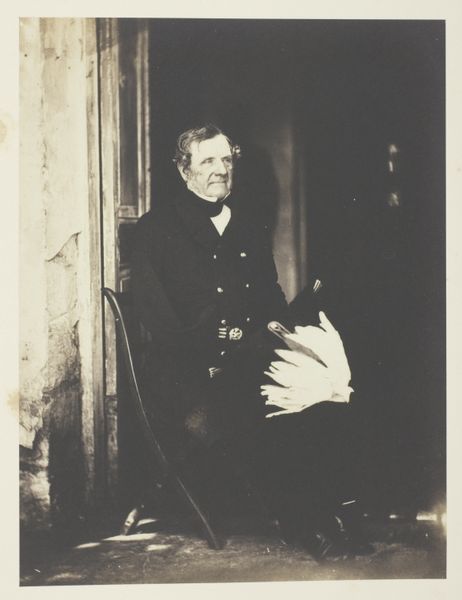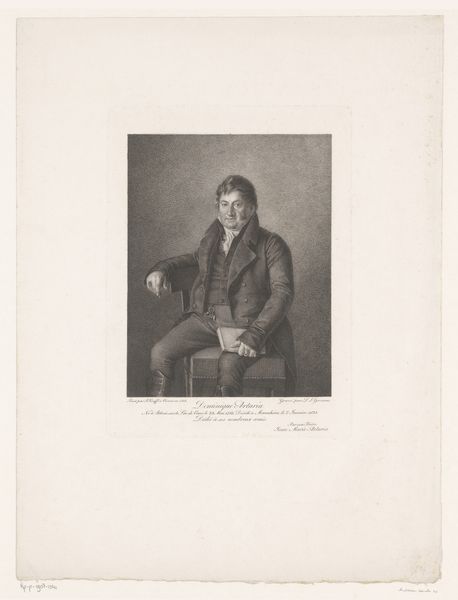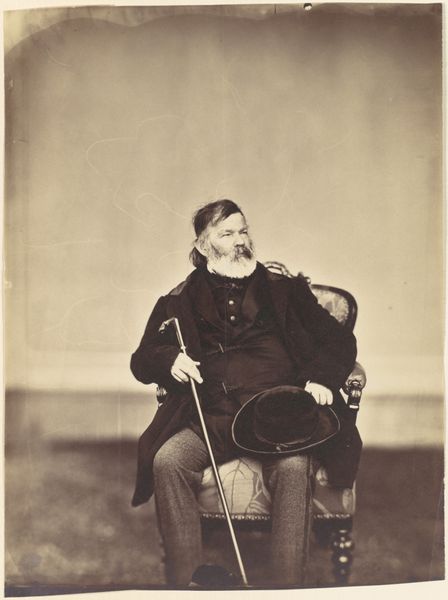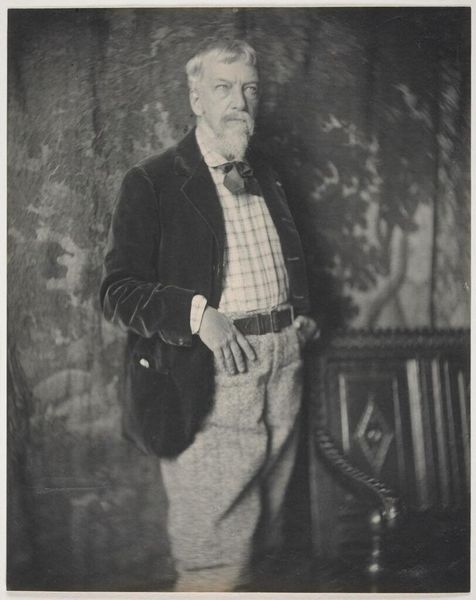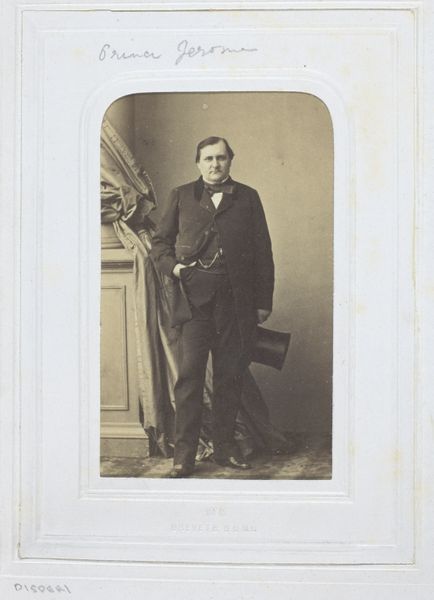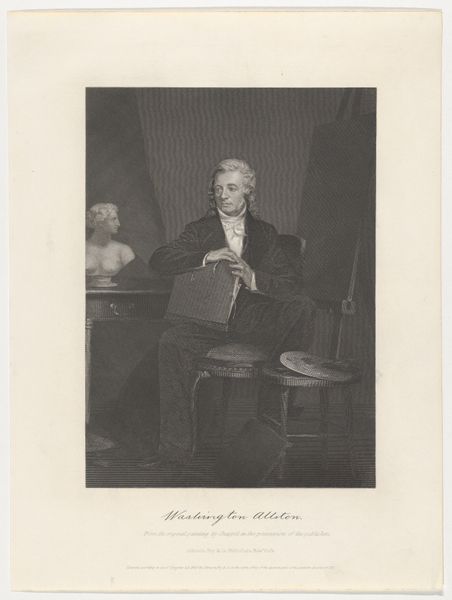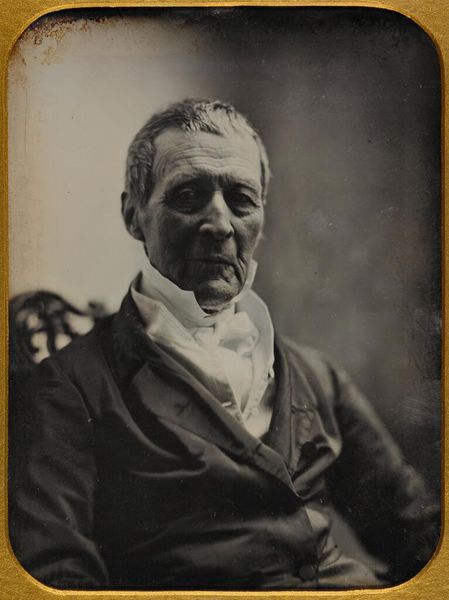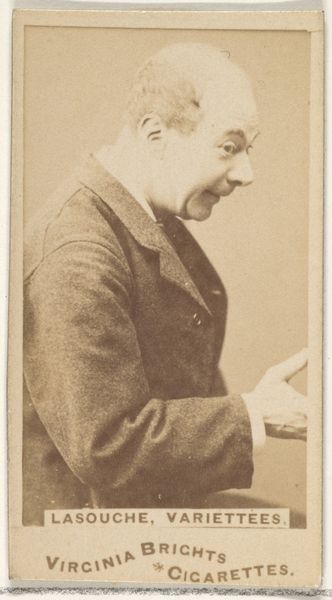
Dimensions: Image: 7 13/16 × 5 7/8 in. (19.9 × 14.9 cm) Mount: 23 5/8 × 17 1/4 in. (60 × 43.8 cm)
Copyright: Public Domain
Curator: It's fascinating, isn’t it? This is Roger Fenton's "Field Marshall Lord Raglan, Crimea," a daguerreotype from 1855 currently residing at the Metropolitan Museum of Art. It offers such a window into Victorian military portraiture. Editor: Window is right. But a very gloomy window, it feels like I’m peeking into a shadowed memory. All that black cloth and the stark white plumage... There's an almost ghostly feel, isn't there? He looks…distant. Curator: The use of daguerreotype during that era lent itself to the romantic sensibility, though there was a bit of push-pull: it's meant to offer faithful realism. Fenton's approach places Lord Raglan firmly within the conventions of documenting historical figures. The Crimean War, of course, was in full swing then, which makes the composition choices feel rather...strategic, I'd say. Editor: Strategic is one word. Claustrophobic comes to my mind. Look at the setting! Lord Raglan looks cornered! The peeling door and stark shadow suggest something hidden, or rotten. Romantic? Maybe from a distance, like observing an exquisite tragedy. I wouldn't want that energy near my place. Curator: True enough. We now view the Crimea through the lenses of war, imperialism, even photographic practices that Fenton shaped himself. Still, that careful posing, the detail captured in the uniform – they construct a visual narrative meant to convey power, though through today’s perspective perhaps hints a darkness you mentioned. Editor: Darkness indeed. And even beyond any "official" narrative of war, portraiture does not have to celebrate, right? It can ask difficult questions; this is about mortality, even the hollowness of warriorship. I almost feel empathy for him trapped, you know, caught in that silvered instant. Curator: Absolutely, that interpretation feels fair. It highlights photography's capacity to freeze moments laden with complexity, beyond simple documentation. Fenton certainly aimed to immortalize Raglan but, perhaps inadvertently, captured vulnerability as well. Editor: Vulnerability lurking, just like my landlord hiding until rent day. That awareness actually enriches how I view these older portraits and photographs; what started as “gloomy” and sad for me now feels profoundly human. Curator: Well put! And understanding that tension enriches our understanding not just of Fenton, but of our evolving dialogue with images from the past. Thanks for sharing.
Comments
No comments
Be the first to comment and join the conversation on the ultimate creative platform.
